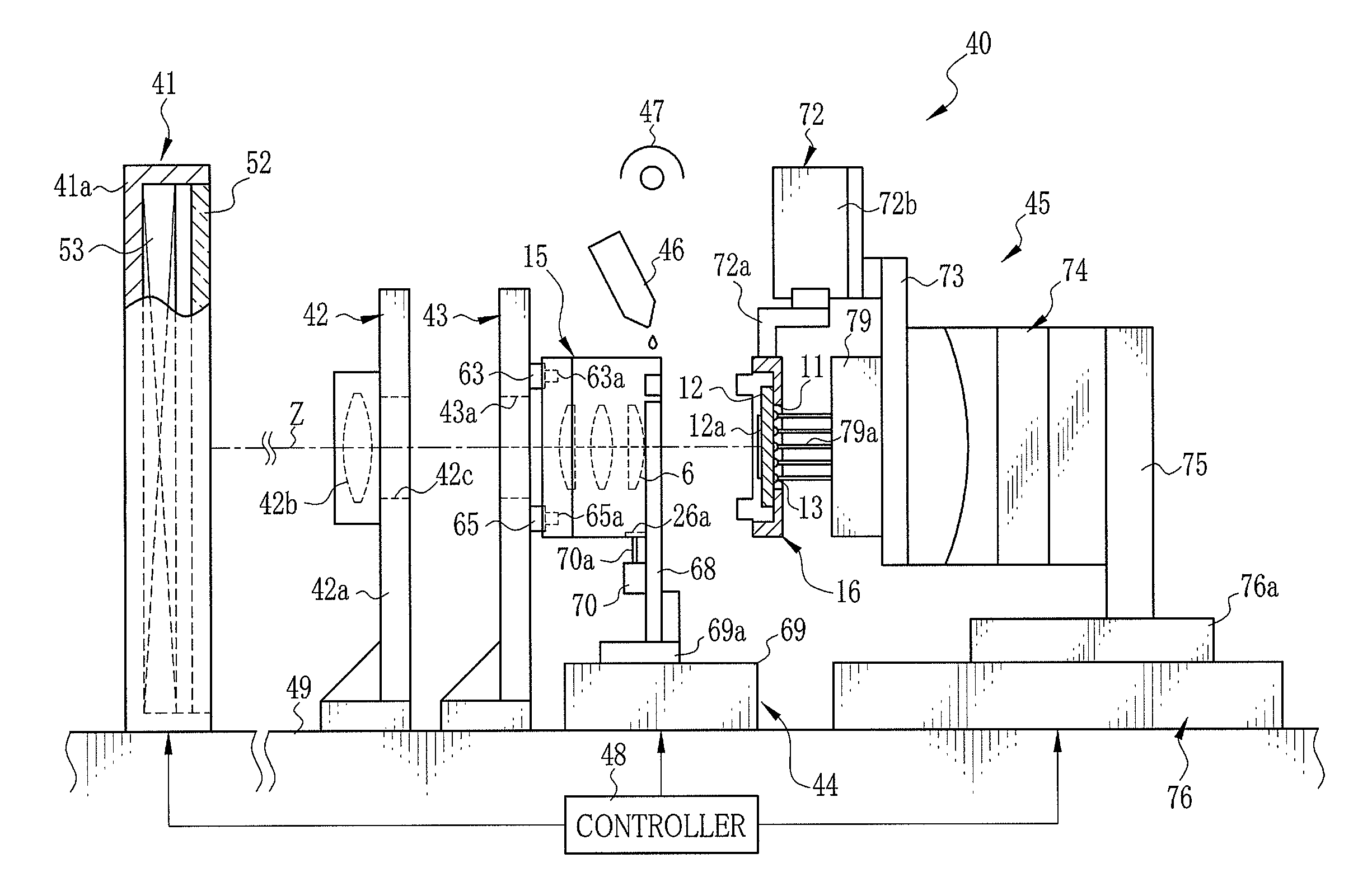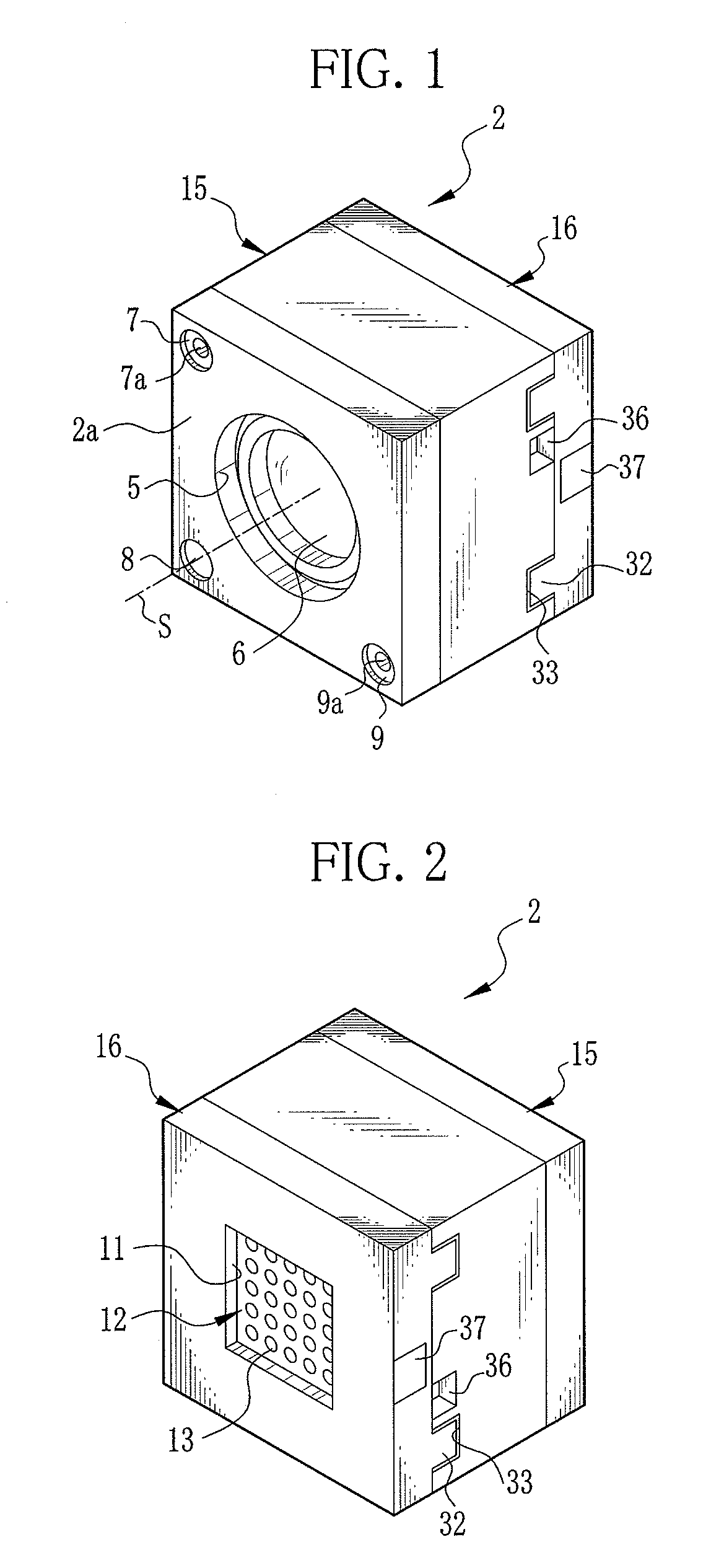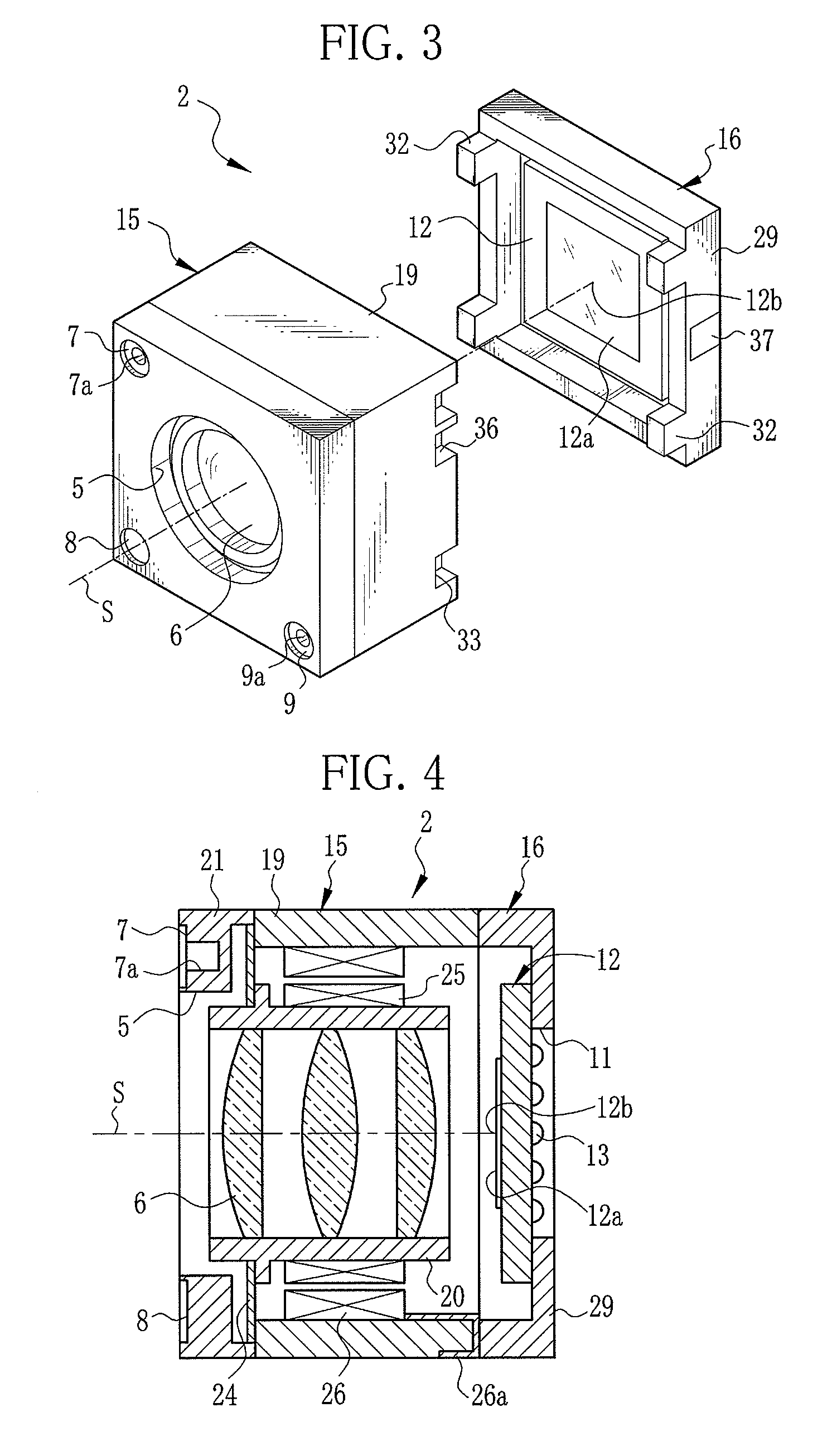Method for adjusting position of image sensor, method and apparatus for manufacturing a camera module, and camera module
a technology for image sensors and camera modules, which is applied in the field of method and apparatus for manufacturing camera modules, and the field of adjusting the position of image sensors, can solve the problems of long time, long time-consuming, and difficult to adjust the tilt of the image sensor, and achieve the effect of short time and short tim
- Summary
- Abstract
- Description
- Claims
- Application Information
AI Technical Summary
Benefits of technology
Problems solved by technology
Method used
Image
Examples
first embodiment
[0076]Next, the present invention is described. As shown in FIG. 5, a camera module manufacturing apparatus 40 is configured to adjust the position of the sensor unit 16 to the lens unit 15, and then fixe the sensor unit 16 to the lens unit 15. The camera module manufacturing apparatus 40 includes a chart unit 41, a light collecting unit 42, a lens positioning plate 43, a lens holding mechanism 44, a sensor shift mechanism 45, an adhesive supplier 46, an ultraviolet lamp 47 and a controller 48 controlling these components. All the components are disposed on a common platform 49.
[0077]The chart unit 41 is composed of an open-fronted boxy casing 41a, a measurement chart 52 fitted in the casing 41a, and a light source 53 incorporated in the casing 41a to illuminate the measurement chart 52 with parallel light beams from the back side. The measurement chart 52 is composed of, for example, a light diffusing plastic plate.
[0078]As shown in FIG. 6, the measurement chart 52 has a rectangula...
third embodiment
[0135]Although in the third embodiment the approximate curve AC is generated using the spline interpolation, a different interpolation method, such as a Bezier interpolation or an Nth polynomial interpolation may be used to generate the approximate curve AC. Furthermore, the approximate curve generating section 112 may be disposed outside the in-focus coordinate value obtaining circuit 110, although it is included in the in-focus coordinate value obtaining circuit 110 in the above embodiment.
[0136]Next, the fourth embodiment of the present invention is described. The fourth embodiment uses an in-focus coordinate value obtaining circuit 120 shown in FIG. 28 in place of the in-focus coordinate value obtaining circuit 87 shown in FIG. 8. Similar to the first embodiment, the in-focus coordinate value obtaining circuit 120 obtains the H-CTF values and the V-CTF values at plural measurement positions in the first to fifth imaging positions 89a-89e. Additionally, the in-focus coordinate va...
fourth embodiment
[0141]In the fourth embodiment, by way of contrast, the differences SB from the designated value 122 are calculated, and the measurement positions having the smallest difference SB are determined as the horizontal and vertical in-focus coordinate values. Since each in-focus coordinate value is shifted toward the designated value 122, adjusting the position of the sensor unit 16 based on the in-focus coordinate values serves to reduce the variation of the H-CTF values and the V-CTF values of the first to fifth imaging positions 89a-89e. As a result, the camera module 2 of this embodiment can produce images with an entirely uniform resolution to be perceived as good image quality.
[0142]The designated value 122 may be determined as needed according to a designed value and other design conditions of the taking lens 6. Additionally, the lowest value or an averaged value of each CTF value may be used as the designated value.
[0143]Although the designated value 122 is stored in the ROM 121 ...
PUM
 Login to View More
Login to View More Abstract
Description
Claims
Application Information
 Login to View More
Login to View More - R&D
- Intellectual Property
- Life Sciences
- Materials
- Tech Scout
- Unparalleled Data Quality
- Higher Quality Content
- 60% Fewer Hallucinations
Browse by: Latest US Patents, China's latest patents, Technical Efficacy Thesaurus, Application Domain, Technology Topic, Popular Technical Reports.
© 2025 PatSnap. All rights reserved.Legal|Privacy policy|Modern Slavery Act Transparency Statement|Sitemap|About US| Contact US: help@patsnap.com



